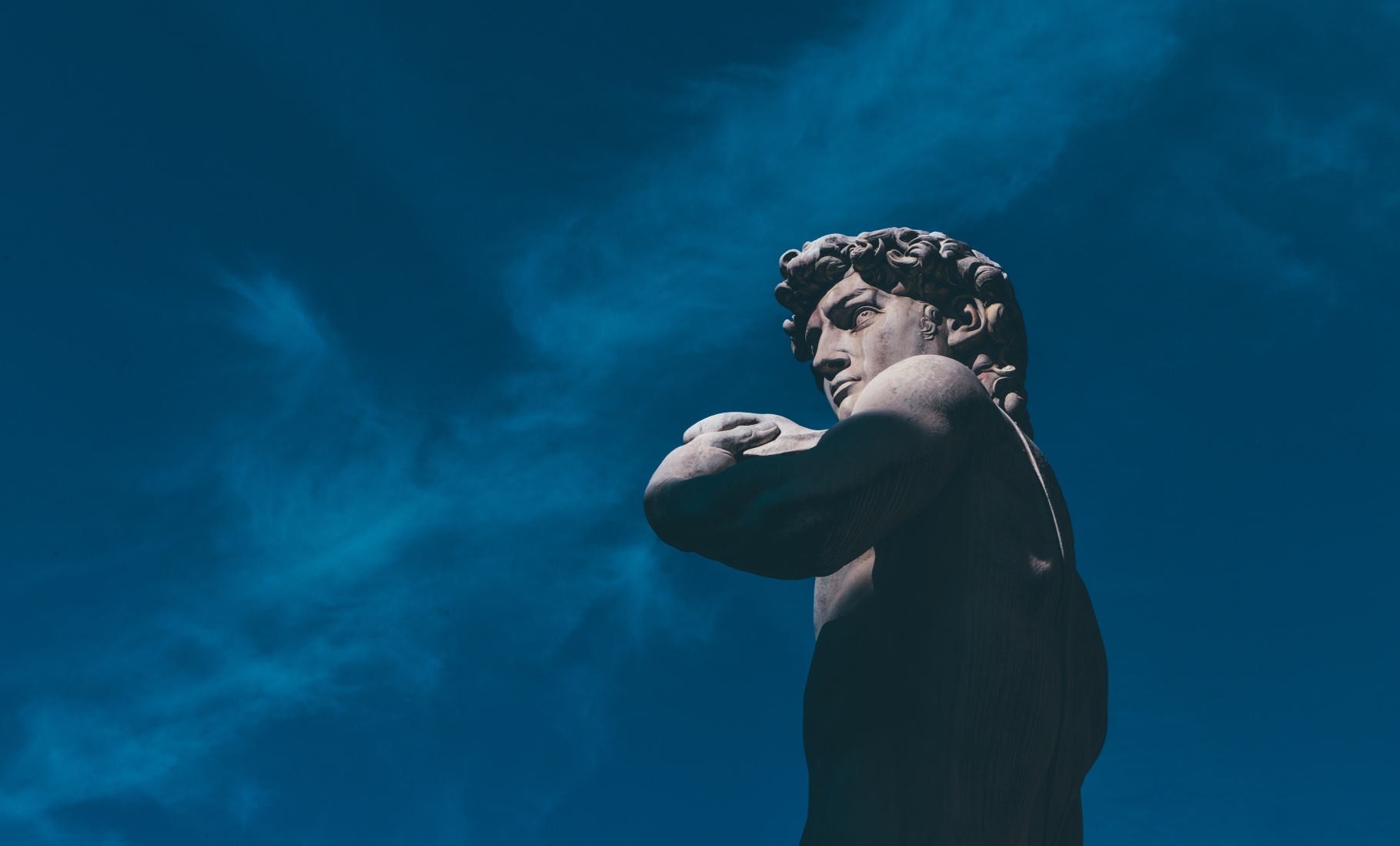There is a text about classical works that, in turn, has become a classic of literary studies. In his Western Canon, published in 1994, the great American critic Harold Bloom collected a series of texts offering a portrait of the culture on which generations of students have been formed: a list of masterpieces standing at the very heart of our civilization.
The key question that inspired his extensive research was which works and which writers shaped the way we think and see the world we live in. Beyond the distinctive characteristics of each author and literary movement, beyond the success of a book and the personal taste informing our reading choices – from the books we read to those we discard, all the way to those we passionately fall in love with – we can, in fact, identify the works that helped create a collective heritage. Because Europe and the US do share a common knowledge and specific values. We are aware, in other words, that certain narratives and images are part of a common patrimony that transcends borders and languages.
From Dante to Chaucer, from Shakespeare to Dickens, from Molière to Goethe, from Cervantes to Tolstoy, Harold Bloom identified twenty-six authors, prose writers, and playwrights who, in his view, “have to be known” in the sense that they are fundamental for every person’s education and, above all, are indispensable to understand the development of Western culture. In other words, the varied mosaic of our culture wouldn’t be complete without the contribution these “magnificent 26” gave to it.
However, it must be said that, while we can generally agree on the importance of the books and authors in Bloom’s “Canon,” there is still ample room for improvement. A controversial and criticized work (it has been accused of sexism and racism, and faced objections about the excessive presence of English authors and the almost complete dismissal of contemporary ones), the “Canon” is right on one point: there is a common thread running through the materials included in the list.
Each book added a tile to that cultural puzzle in which our society recognizes itself. In this sense, the word canon truly goes back to the origins of Western culture, to the ancient Greek word kanon, which means “cane,” rod,” and, in a broader sense, “rule,” reference parameter. In short, Bloom’s list may be partial, debatable, and incomplete, but within it, there are some “fixed points” essential to understanding Western literature. Just as it is essential to study Dante Alighieri to understand Italian culture.
Like Dickinson and Wordsworth, or Ibsen and Freud, Joyce or Kafka, there are many other “giants” who could enter the list, and not only from the literary field. After all, Darwin’s Theory of Evolution or Einstein’s Theory of Relativity have deeply shaped our way of thinking. Before them, we thought about the world differently; after them, nothing was the same. That is to say, there are individuals who, with their works, whatever their nature may be, set unmovable standards in our thinking to the point that, whether we like it or not, they have created a common intellectual ground for us to use, a shared horizon of values.
What about, then, Leonardo da Vinci’s Mona Lisa or Giuseppe Verdi’s Nabucco and its third act, where the choir intones the famous Va Pensiero? What about Florence’s Duomo, with Filippo Brunelleschi’s imposing cupola? They all fully belong in the Western Canon. And do we want to talk about the eclectic architectural style of Andrea Palladio’s villas in Veneto, or about the impact that Pietro della Gondola, the Paduan designer who left an indelible mark on architecture from the Renaissance onward, had on US culture, to the point he is now considered the “father of American architecture”? Palladio is just one of many possible examples of how our culture absorbed “canonical” styles, that is to say, standards.
At this point, we must talk about the proverbial elephant in the room, given the resonance the event had both here and across the ocean: Michelangelo’s David. The accusations of pornography were so discordant and off-key that they seemed to cast doubt even on the foundations of the culture we consider classical, canonical, and conventional.
We thought that its beauty, its perfection, its iconic artistic value couldn’t be questioned because it is part of our collective heritage. But it did happen. One could say that, in a society founded on free thought and the right to freedom of expression, this is fine and acceptable. But that’s not the point here. The real question, the one leading us all the way back to where we started, is: can a sculpture have contributed to constructing our idea of art? And the answer is: absolutely yes. Because, from some works of art, there is no going back, just like there is no going back from certain inventions, like the telescope. Just as every writer has referred to certain “indispensable” literary works and had to take them into account, willingly or unwillingly, so every artist after Michelangelo’s sculpture of David has been “forced” to measure themselves against the “canon” the famous artist established in the 1500s.
The point here is not to define once and for all the list of works we view as pillars of our culture, because this list will always be provisional and partial, but to understand that we cannot do without some masterpieces. Ignoring their existence makes it urgent to return to Aeschylus, in 460 BC, and recover the very first building blocks of Western culture – and let it be clear: there is no competition between cultures, it is only a reflection on the models that define the cultural formation traditionally adopted in Italy and also the USA. Prometheus Bound reminds us of the myth of the Titan punished for giving humans fire, which was essential for their development. Humans see the light when they possess technique, that is, when they possess knowledge. And knowledge is precisely this: the tool enabling us to move forward.
C’è un saggio sulle opere classiche che, a sua volta, è diventato un classico degli studi letterari. Il grande critico americano Harold Bloom, pubblicando nel 1994 il “Canone Occidentale”, ha raccolto una serie di testi che, insieme, ci danno il ritratto della cultura su cui si sono formate intere generazioni di studenti. Una lista di capolavori che fondano la nostra civiltà.
La domanda alla base della sua voluminosa ricerca è stata chiedersi quali siano i testi e gli scrittori su cui poggia il modo di vedere le cose nel mondo in cui viviamo. Al di là delle caratteristiche peculiari dei vari autori, delle correnti letterarie, del successo di un’opera e del gusto personale con cui scegliamo i libri da leggere, li scartiamo o ce ne innamoriamo perdutamente, è possibile cogliere contributi letterati che messi insieme costruiscono un patrimonio collettivo. Al di là delle varie lingue che si parlano nel vecchio continente o dei confini dei Paesi in cui viviamo, tra Europa e Stati Uniti sentiamo di condividere un sapere comune e certo valori, sappiamo che determinate storie e immagini sono un patrimonio condiviso.
Da Dante a Chaucer, da Shakespeare a Dickens, da Molière a Goethe, da Cervantes a Tolstoj, Harold Bloom ha individuato ventisei autori, prosatori e drammaturghi che a suo dire “non si possono non conoscere” nel senso che sono basilari per la formazione di ciascuno e che, soprattutto, sono tasselli imprescindibili attraverso i quali si colgono le direttrici della cultura occidentale. Insomma il mosaico non è completo senza il contributo che ciascuno di questi magnifici 26 ha portato.
Va detto che il “Canone” di Bloom offre una lista condivisibile ma diciamo pure che ha ampi margini di miglioramento. Opera controversa e criticata (ha raccolto dalle accuse di sessismo e razzismo alle contestazioni relative all’eccessiva presenza di autori inglesi al limite di aver stroncato senz’appello i contemporanei), su un punto ha tuttavia ragione: c’è un fil rouge che corre tra i libri inclusi nell’elenco.
Ogni libro ha aggiunto una tessera a quel puzzle culturale in cui si riconosce la nostra società. Canone in questo senso va proprio a recuperare le origini della cultura occidentale: torna alla lingua greca e usa “kanon” che significa canna, bastone diritto, e in senso lato “regola”, parametro di riferimento. Insomma, la lista degli autori indicata da Bloom sarà pure parziale, opinabile e incompleta però è vero che fra essi ci sono alcuni “punti fermi” da conoscere assolutamente se si vuole capire la letteratura occidentale. Esattamente come è indispensabile studiare Dante Alighieri per scoprire la cultura italiana.
Come Dickinson e Wordsworth o Ibsen e Freud, Joyce o Kafka, ci sono molti altri “giganti” che potrebbero entrare nell’elenco e non solo in campo letterario. In fondo, l’Evoluzione della specie di Darwin o la Teoria della relatività di Einstein hanno profondamente segnato il nostro modo di ragionare. Prima di loro pensavamo il mondo in modo differente esattamente come, dopo di loro, non abbiamo più potuto farne a meno. Ci sono cioè personaggi che con le loro opere, di qualsiasi natura siano state, hanno messo dei paletti irremovibili nel nostro pensiero al punto che oggi, vuoi o non vuoi, costruiscono un terreno comune di ragionamento, un orizzonte valoriale condiviso.
Che dire quindi della Gioconda di Leonardo da Vinci o del Nabucco di Giuseppe Verdi che nel terzo atto intona il celebre “Va pensiero” o ancora del Duomo di Firenze con l’imponente cupola di Filippo Brunelleschi? Rientrano tutti a pieno titolo nel Canone Occidentale.
Vogliamo parlare della composta linea architettonica delle ville di Andrea Palladio in Veneto o piuttosto dell’impatto che Pietro della Gondola, questo il nome del progettista padovano che lasciò un segno indelebile dal Rinascimento in poi, ha avuto sulla cultura a stelle e strisce tanto che oggi lo si considera il “padre dell’architettura americana”? Palladio è solo una delle tante possibili dimostrazioni di come la nostra cultura abbia assorbito stili “canonici” ovvero standard.
A questo punto del discorso ci interroghiamo sul caso eclatante, vista la risonanza che ha avuto al di qua e al di là dell’oceano, del David di Michelangelo. Le accuse di pornografia sono state così stonate e dissonanti che è sembrato si mettessero in dubbio persino le basi della cultura che consideriamo classica, canonica, convenzionale.
Pensavamo che la bellezza, la perfezione dell’opera, il valore artistico più iconico non potesse essere messo in dubbio perché patrimonio collettivo. Invece è successo. Benissimo, si dirà in una società fondata sul libero pensiero e il diritto alla libertà di espressione. Ma il punto qui è un altro.
La domanda che ci fa tornare al punto di partenza è: può una scultura aver contribuito a costruire la nostra idea di arte? E la risposta è: assolutamente sì. Perché ci sono opere che, come il telescopio, non consentono più passi indietro. Così come a certe “imprescindibili” opere letterarie ogni scrittore successivo ha fatto riferimento e con esse, volente o nolente, si è dovuto confrontare, così è successo a ogni artista dopo la scultura del David: è stato “costretto” a misurarsi con il “canone” che Michelangelo ha stabilito nel 1500.
Il punto, qui, non è definire una volta per tutte l’elenco delle opere che consideriamo pilastri della nostra cultura perché questo elenco sarà sempre provvisorio e parziale ma capire che non si può fare a meno di alcuni capolavori. Ignorarne l’esistenza rende urgente tornare a Eschilo, al 460 a.C., per recuperare i primi mattoni della cultura occidentale (sia chiaro: non c’è competizione fra culture, si tratta solo di fare una riflessione sui modelli che definiscono la formazione culturale adottata tradizionalmente in Italia come negli Usa), quando “Prometeo Incatenato” ci ricorda il mito del Titano punito per aver donato agli uomini il fuoco indispensabile per il loro progresso. Gli esseri umani vedono la luce quando si impossessano della tecnica cioè della conoscenza. La conoscenza è esattamente questo: il mezzo che ci permette di fare passi in avanti.





























